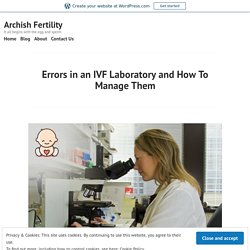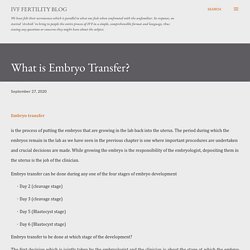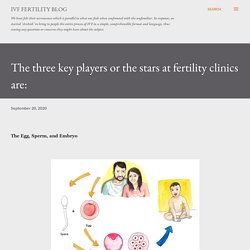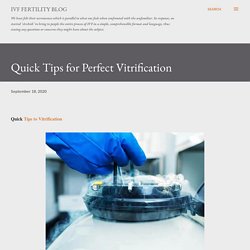Zoom
Trash

Archish IVF
"Archish" is to provide real and quality information about what happens behind the closed doors of an IVF laboratory. We help you understand "embryos" and the secret behind the working of a good IVF laboratory.
Coping with Infertility and Mental Health - Archish Fertility. Ever since our childhood we have seen a set pattern of the “life cycle” – Education – Work – Marriage – Children (preferably two) to be termed as a “happy family”.

Firstly, if during your fertility journey you are going through anxiety, depression or are overcome with sadness it only means one thing: You are Normal. The psychological wish for a child is principally conditioned by socio-cultural frameworks in which individuals are born and brought up. Being infertile can be a painful emotional experience particularly during the reproductive years of one’s life. As per the stress and coping paradigms of infertility, such stress revolves around many variables like severity of infertility diagnosis, success of fertility treatments, reactions of others, and psychological characteristics of couples It is said that couples facing infertility are “grieving parents”. Like everyone else, you probably are also wondering that does reducing stress and anxiety increase your chances of conceiving? Andrology, Embryology and IVF Lab Set-Up in Gujrat, Delhi, India. Errors in an IVF Laboratory and How To Manage Them – Archish Fertility.
ART errors are fortunately a rare occurrence. but humans are fallible and mistakes are inevitable.

We, as infertility specialists and IVF lab setup consultancy must be vigilant in reviewing existing risk management systems and consider other options to minimize/eliminate these events. ART programs should work to emphasize honesty and transparency to improve quality of care. “To err is human, but we can work together to build a safer healthcare system” The errors made in ART can range from mild to severe, which may or may not affect the outcome of the cycle. None/Minimal: Error or problem occurred, but fully correctable or no measurable effectModerate: Serious error which affects a cycle, but cycle not lostSignificant: Significant compromise or loss of cycleMajor: (1) A pregnancy or birth confirmed to have arisen from a misidentification of gametes or embryos (2) Systemic or repeated problems, which significantly affect multiple patients over a period of time.
What is Embryo Transfer? Embryo transfer is the process of putting the embryos that are growing in the lab back into the uterus.

The period during which the embryos remain in the lab as we have seen in the previous chapter is one where important procedures are undertaken and crucial decisions are made. While growing the embryo is the responsibility of the embryologist, depositing them in the uterus is the job of the clinician. The three key players or the stars at fertility clinics are: The three key players or the stars at fertility clinics are: 1.

Egg/Oocyte/Ovum2. Sperm3. Embryo The Egg The egg is one of the largest cells in the human body; in fact, it is a giant compared to other cells in the body. Women are born with approximately two million eggs which keep diminishing as the age progresses. An egg lives in the fallopian tubes for about 12-24 hours after ovulation. The Sperm. Quick Tips for Perfect Vitrification. Quick Tips to Vitrification Cryopreservation of oocytes or embryos is a critical step in maximizing the efficiency of any IVF cycle.

To achieve clinical success with cryopreservation is highly variable from laboratory to laboratory, and may depend on many factors including patient age and stimulation protocol, quality of embryos selected for freezing, developmental stage at freezing, media formulation including type of method used, parameters of cooling and warming. All through our time in and outside of the laboratory, during discussions, we have heard vitrification is so difficult.
Believe us, vitrification, is not difficult. Having said this, yes, we agree that there are certain critical steps you need to focus on and keep in mind and the rest just follows through. Principle: Vitrification can be defined as an extreme elevation in viscosity, i.e. solidification of solutions without ice crystal formation at low temperature. Timelines in An IVF Laboratory. Planning A Working Day - A Daily Run of Good Practices In A Working IVF Lab. Rishina Bansal/Navin Desai As known Assisted reproductive technology (ART) comprises of intra-uterine insemination (IUI), conventional In-vitro fertilization (IVF) and intra-cytoplasmic sperm injection (ICSI).

Though currently, when we talk about an IVF cycle, we are largely referring to conventional IVF or ICSI. The decision of applying which process would depend upon what information we have regarding the couple based on couple history, their current examination report like semen analysis and ovarian scan. In general, every IVF lab should be governed by parameters known as key performance indicators (KPIs) or sometimes referred to as performance indicators (PIs) which are important for the systematic monitoring of the laboratory.
Basis: As embryologists, we term the OPU day as Day 0 and we culture the embryos thus formed maximum to Day 5 sometimes to Day 6, thus a typical embryology cycle spread across Day0 – Day5/6. Day -1: Day 0: Fertilization, Day 2 to ET/FET: